Menu principal
Vous êtes ici
Research › Detection of drugs of abuseDetection of drugs of abuse
Detection of drugs of abuse
We are interested in using NMR spectroscopy to detect the presence of drugs of abuse in water based media using water suppression techniques.
1) 3,4-Methylenedioxy-N-methylamphetamine, more commonly called MDMA or ‘‘ecstasy’’, is a synthetic drug similar in structure to methamphetamine :
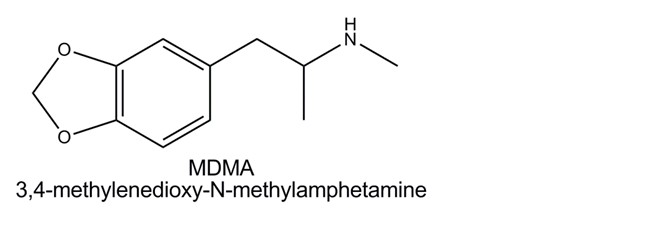
Figure 1: MDMA.
It is an illegal drug with stimulatory and psychedelic effects, and is commonly associated with rave and
trance clubs. Illicit use of MDMA became popular in the 1980s, resulting in its assignment as a Schedule I controlled substance.
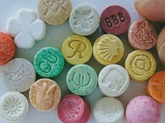
Figure 2: MDMA pills.
Although there are many metabolites formed from MDMA, roughly 65% of the dose is eliminated from the body unchanged in urine. NMR spectroscopy is a powerful tool to analyze chemical structures and can be used to analyze biological fluids for the diagnosis of acute poisoning and drug overdoses without the need for separation and/or derivatization steps. Not only does the NMR technique make a rapid diagnosis possible, requiring only a small sample, but it also allows for qualitative analysis as well as reliable quantification. We are interested in identifying of 3,4-methylenedioxy-N-methylamphetamine (MDMA, ecstasy) in cases of intoxication using nuclear magnetic resonance (NMR) spectroscopy of human urine. We use annew water suppression technique PURGE (Presaturation Utilizing Relaxation Gradients and Echoes) . Below is an NMR spectrum of a contaminated urine sample from a MDMA user. Superimposed in gray is the spectrum of MDMA spiked urine (0.50 mg/mL).
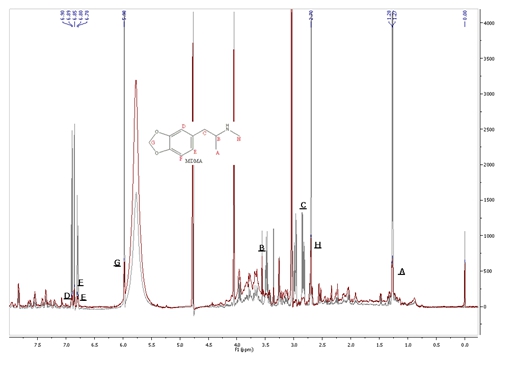
Figure 3: NMR spectrum of a contaminated urine sample from a MDMA user.
2) Gamma-Hydroxybutyric acid (GHB), a naturally occurring short chain carboxylic acid, is a central nervous system depressant that has euphoric and sedative effects. GHB was initially used in anesthesia. Shortly after it appeared on the market, cases of abuse began to emerge and the drug became especially popular at ‘‘rave’’parties. GHB is often ingested as a water-based solution made from the sodium salt NaGHB. GHB undergoes intramolecular esterification to form the corresponding lactone known as gamma-butyrolactone (GBL). GBL is a solvent used in applications such as paint removal and engine cleaning. Conversely, GBL can easily be hydrolyzed to GHB in aqueous solutions as well as in the body. This interconversion creates both forensic and legal problems as most analytical methods are unable to correctly identify the 2 compounds.
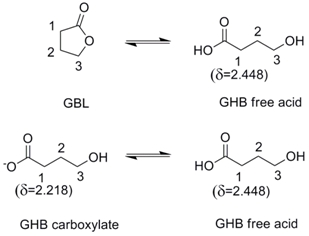
Figure 3: Interconversion between GHB and GBL.
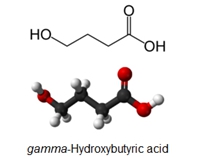
Figure 4: GHB.
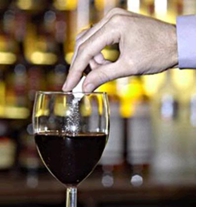
Figure 5: Wine spiked with GHB.
We are interested in using 1H NMR spectroscopy for the direct detection of GHB and GBL in common alcoholic beverages. NMR allows for the direct identification and quantitation of both GHB and GBL compounds in beverages. The method is fast, non-destructive, sensitive and requires no sample preparation which could disrupt the equilibrium between GHB and GBL. Below is an NMR spectrum of a “Rum and Coke” drink contaminated with GHB and GBL.

Figure 6: NMR spectrum of a “Rum and Coke” drink contaminated with GHB and GBL.
